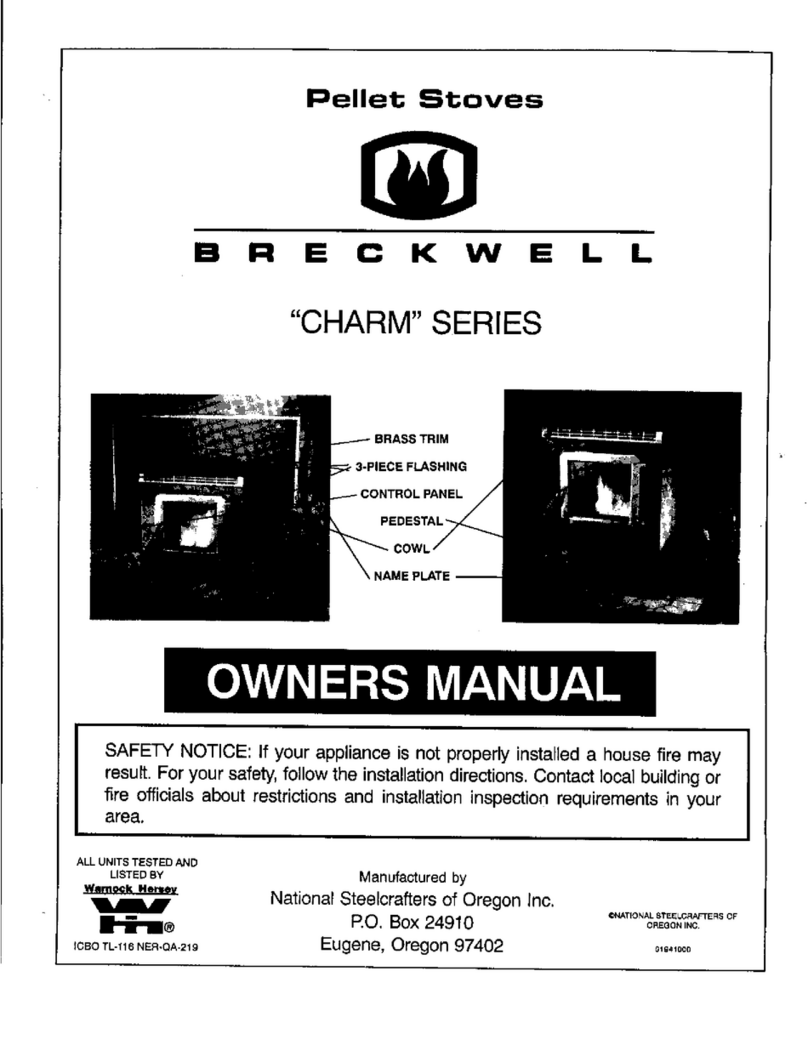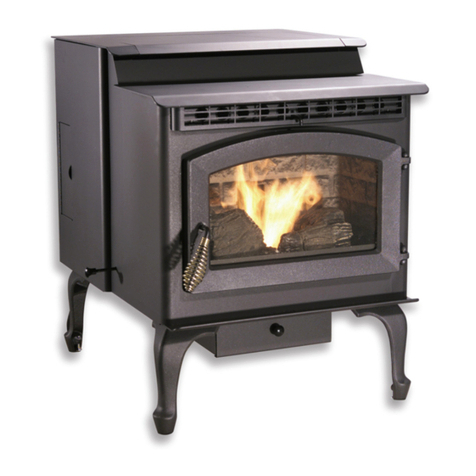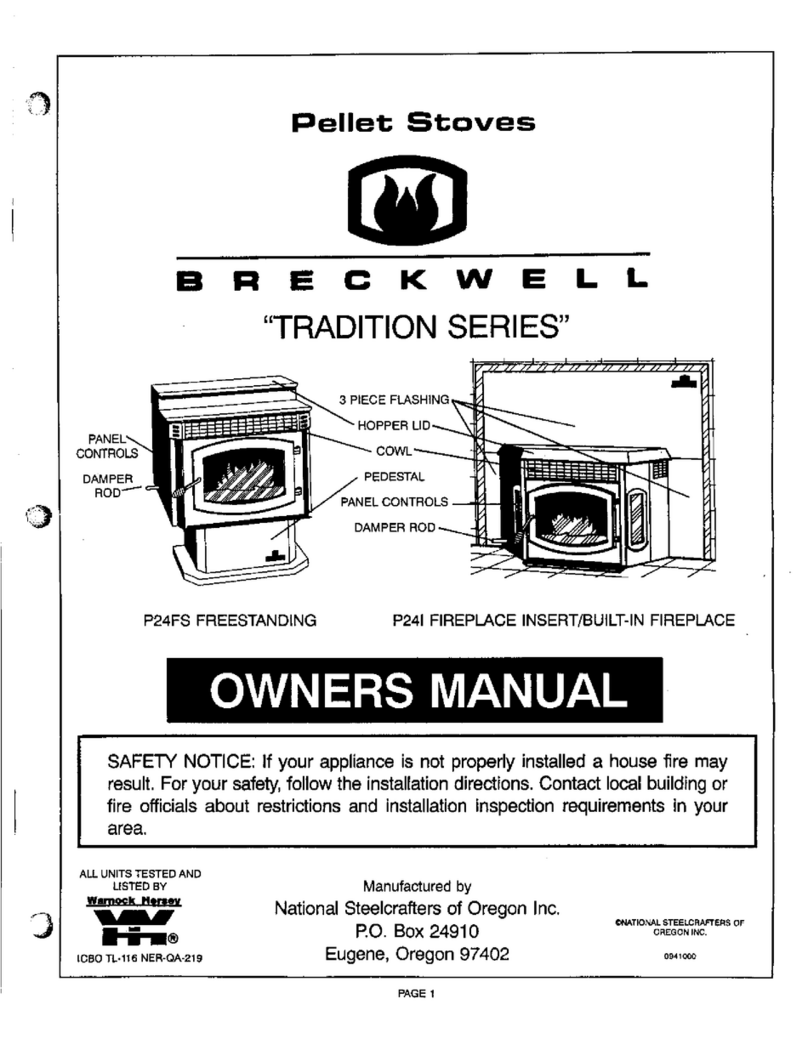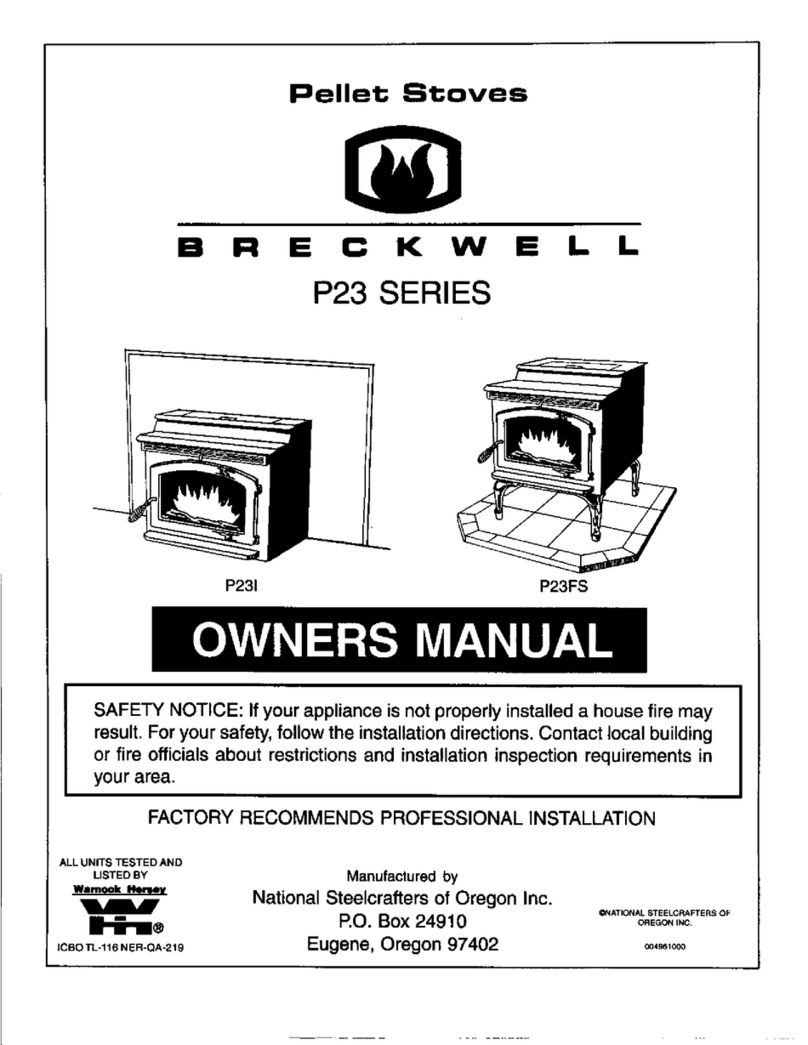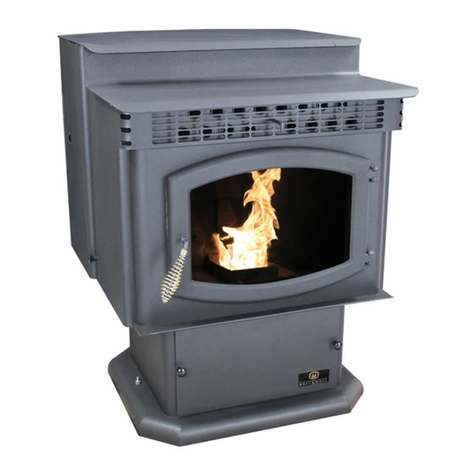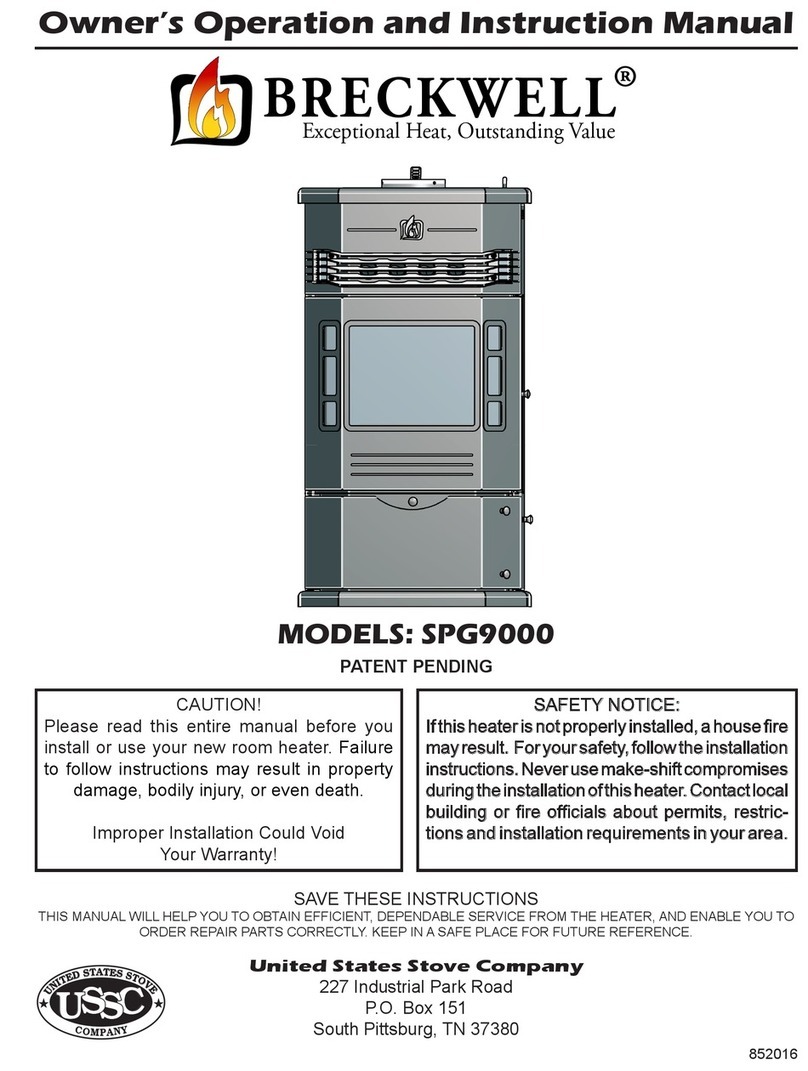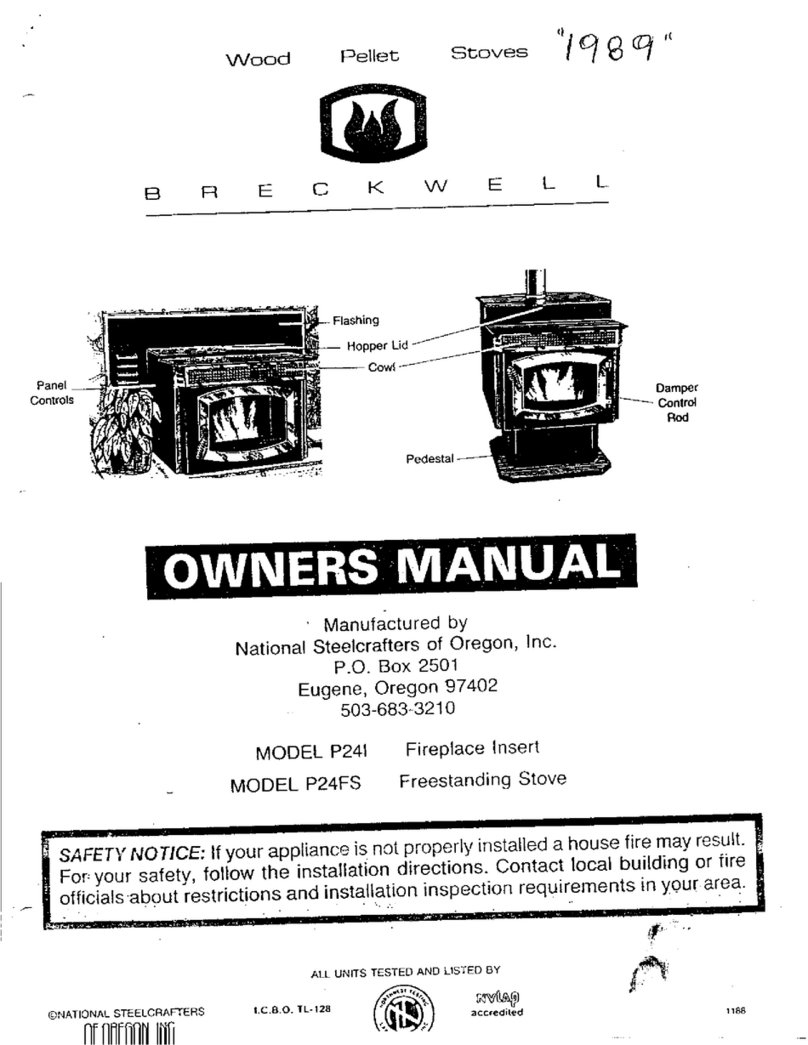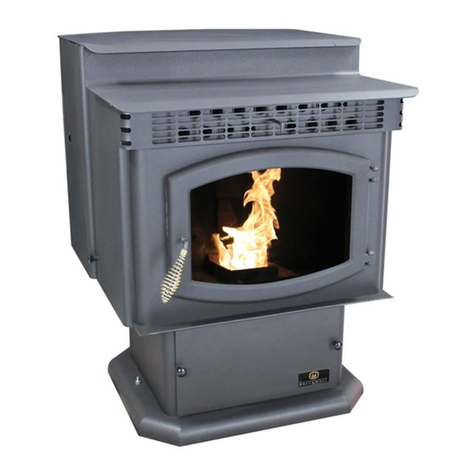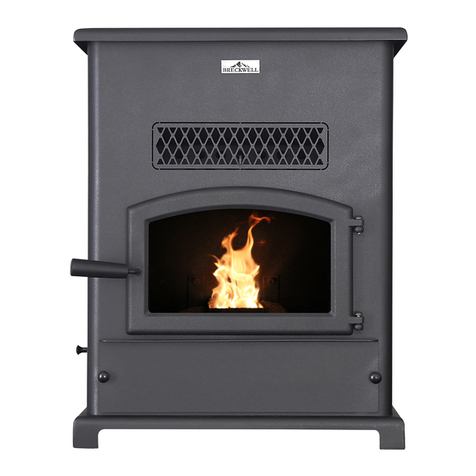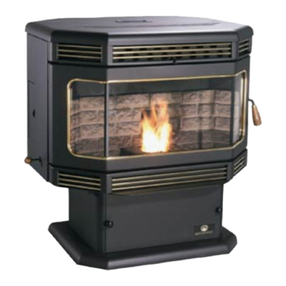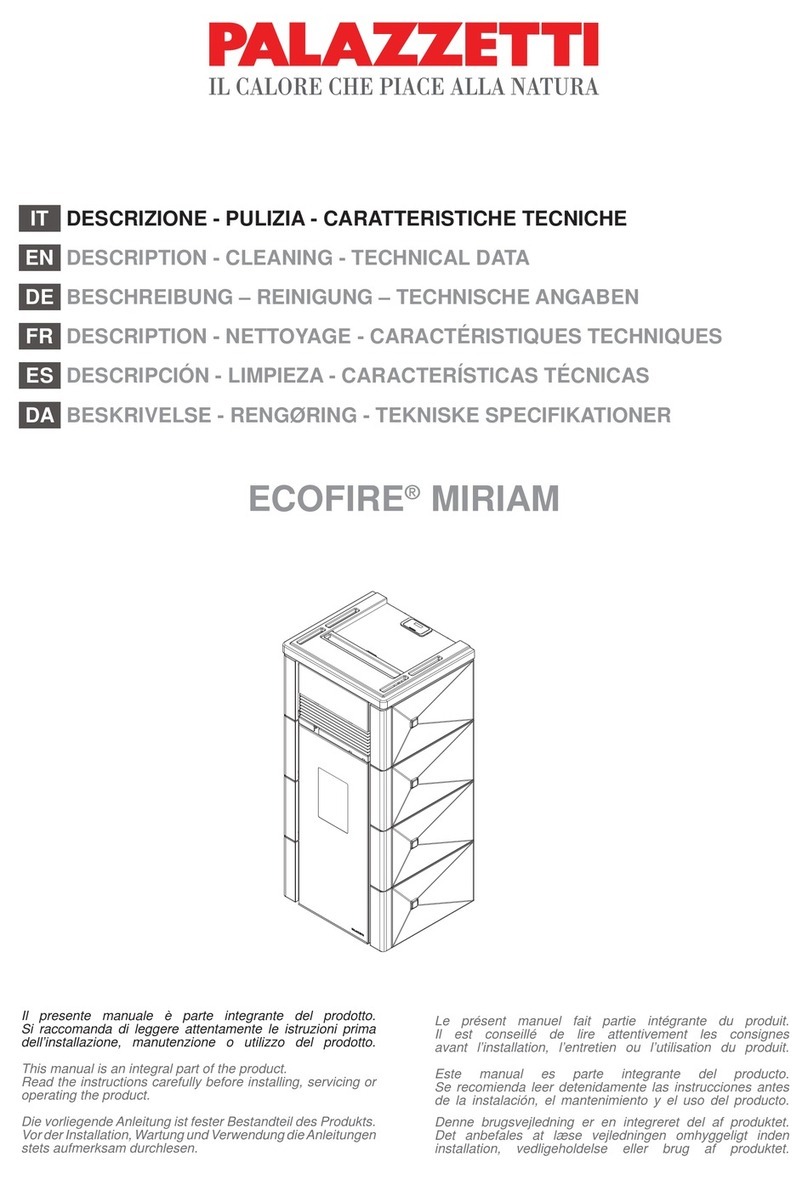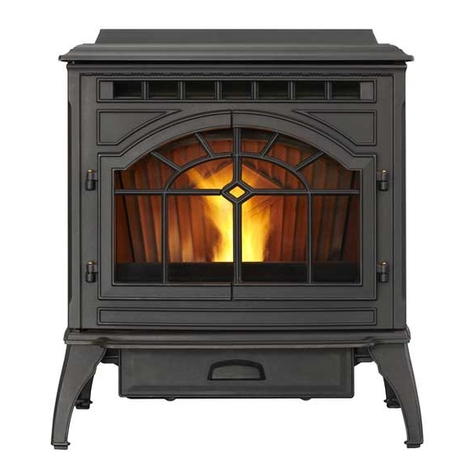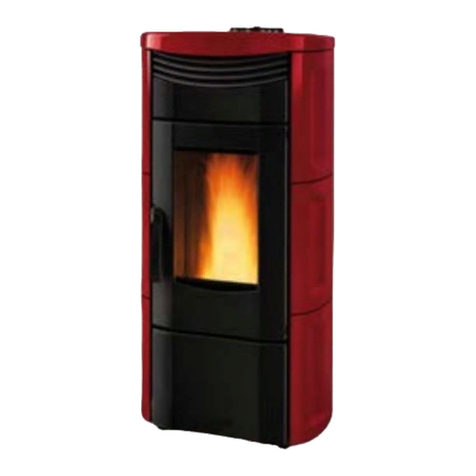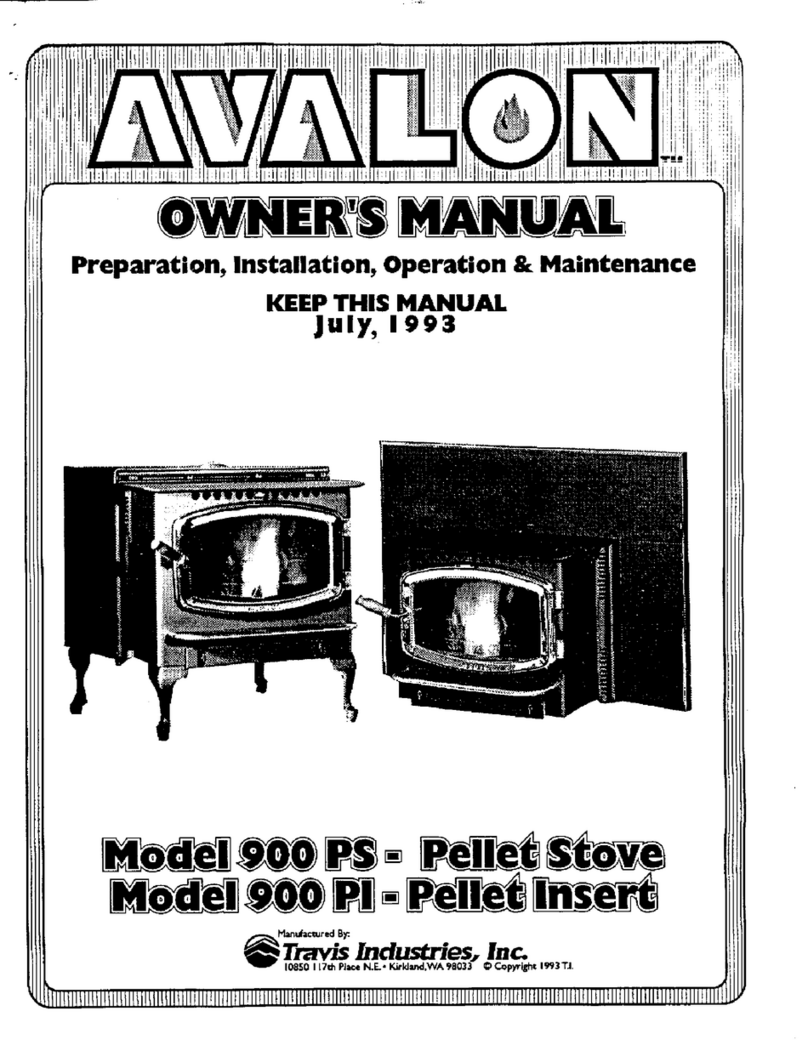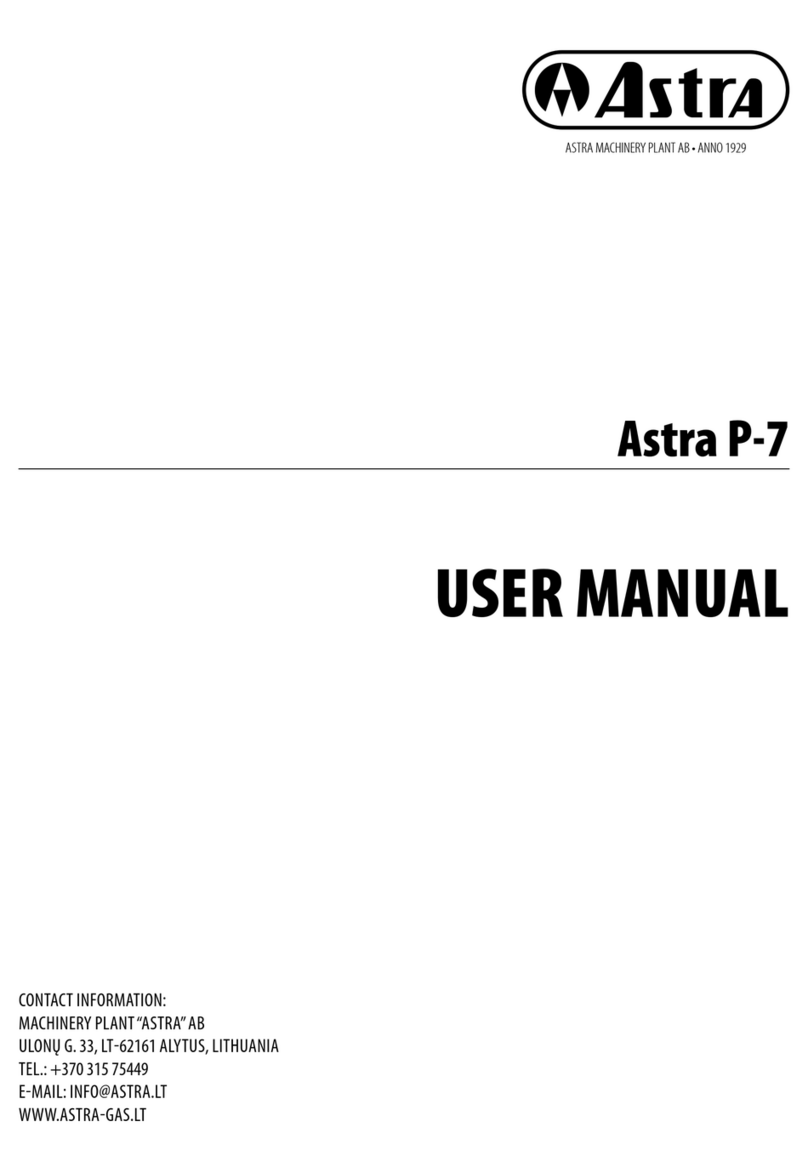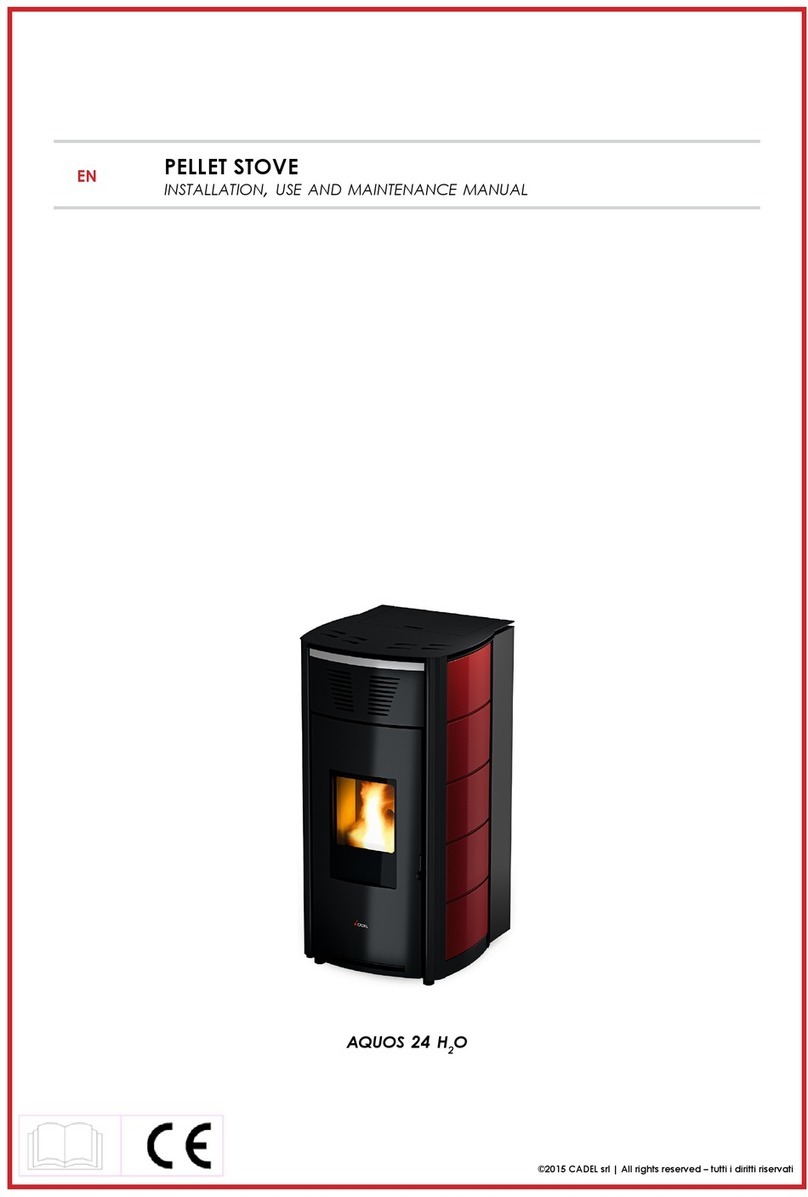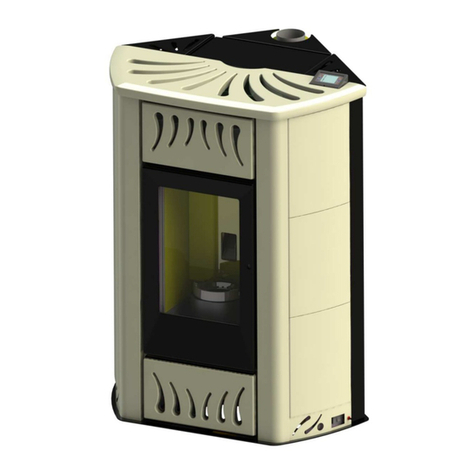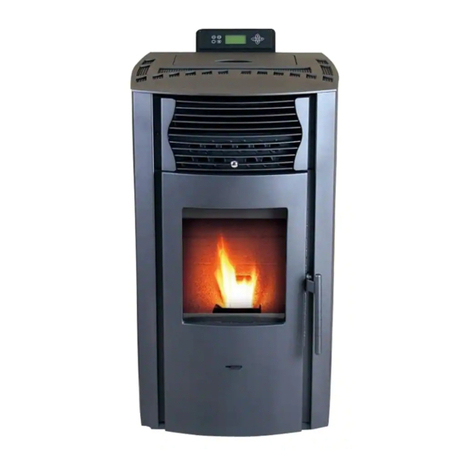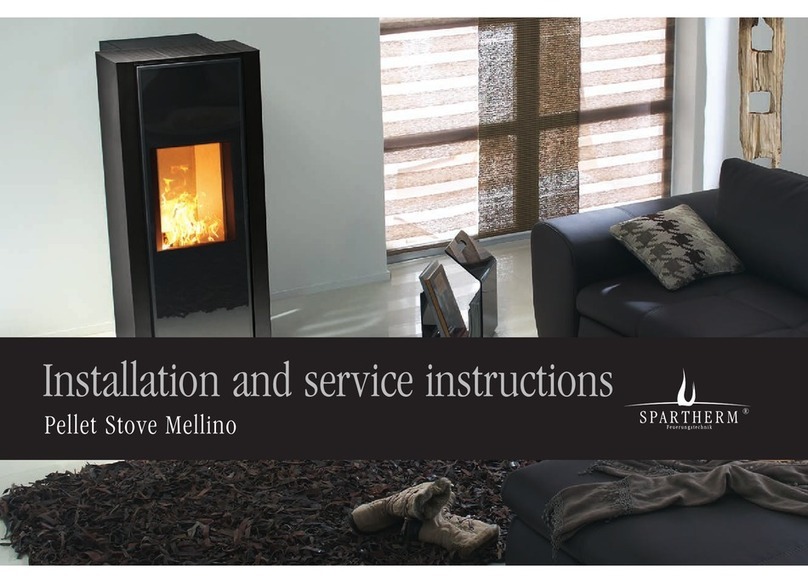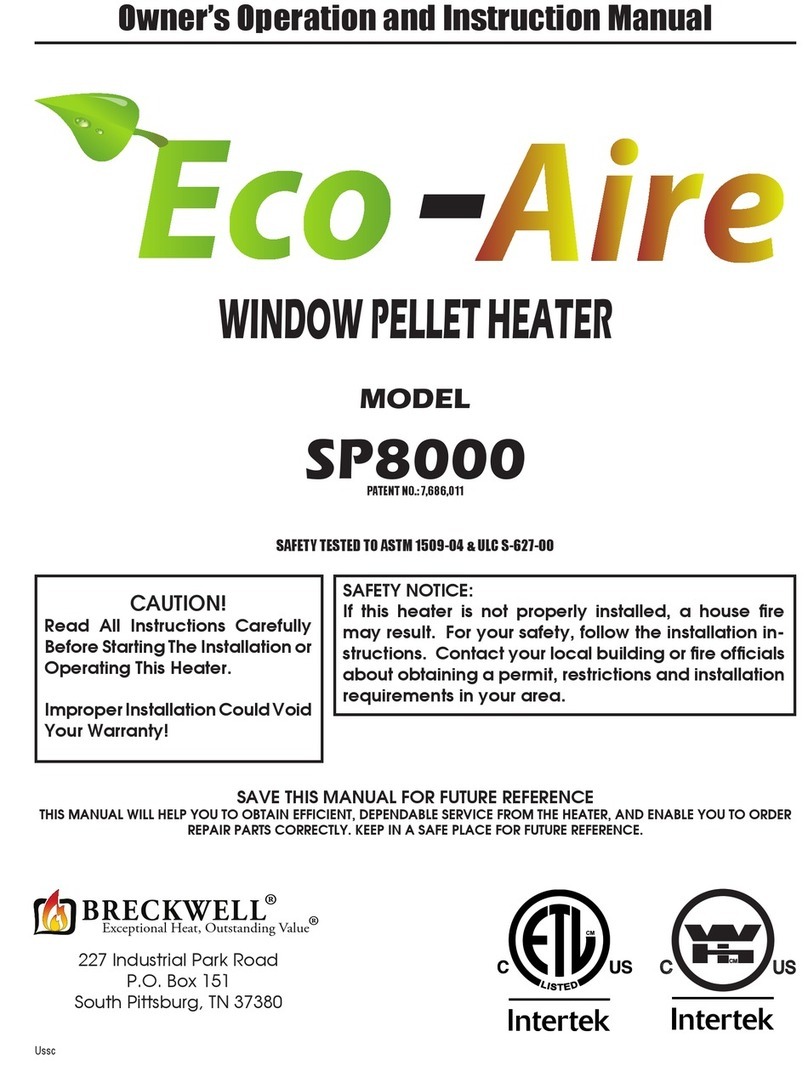
Breckwell 5
IMPORTANT: Read this entire manual before
installing and operating this product. Failure to
do so may result in property damage, bodily injury,
or even death. Proper installation of this stove is
crucial for safe and efcient operation.
Contact your local building officials or
authorities having jurisdiction to obtain a permit
and information on any additional installation
restrictions or inspection requirements in your
area.
Do not throw this manual away. This manual has
important operating and maintenance instructions
that you will need at a later time. Always follow the
instructions in this manual.
This appliance is designed for the use of pelletized fuel
that meet or exceed the standard set by the Pellet Fuel
Institute(PFI), The use of other fuels will void warranty.
This appliance is a freestanding heater. It is not in-
tended to be attached to any type of ducting. It is not
a furnace.
HOT WHILE IN OPERATION. Do not touch the hot
surfaces of the stove. Educate all children on the
dangers of a high-temperature stove. Young children
should be supervised when they are in the same room
as the stove.
Never use gasoline, gasoline-type lantern fuel,
kerosene, charcoal lighter uid, or similar liquids to
start or ’freshen up’ a re in this stove. Keep all such
liquids well away from the stove while it is in use.
Do not place clothing or other ammable items on or
near this stove.
The fuel loading lid and stove top will be hot during
operation; therefore, you should always use the
provided tool or some type of hand protection
when refueling your stove.
WARNING! DO NOT INSTALL IN SLEEPING ROOM.
THE STRUCTURAL INTEGRITY OF THE MOBILE
HOME FLOOR, WALL, AND CEILING/ROOF MUST
BE MAINTAINED.
A working smoke detector must be installed in the same
room as this product.
Install vent at clearances specified by the vent
manufacturer.
Do not connect the vent to a vent serving any other
appliance or stove.
Do not install a ue damper in the exhaust venting
system of this unit.
Your stove requires periodic maintenance and cleaning
(see ”MAINTENANCE ”). Failure to maintain your stove
may lead to improper and/or unsafe operation.
Allow the stove to cool before performing any
maintenance or cleaning. Ashes must be disposed
in a steel container with a tight tting lid, and moved
outside immediately. The closed container of ashes
should be placed on a non-combustible surface or on
the ground, well away from all combustible materials,
pending nal disposal.
Never try to repair or replace any part of the stove un-
less instructions for doing so are given in this manual.
All other work should be done by a trained technician.
The exhaust system should be checked monthly during
the burning season for any build-up of soot or creosote.
Use of outside air is required for Canadian installations
on this unit, and may be used for tightly constructed
homes in the USA.
Do not operate your stove with the viewing door open.
A safety concern may arise from sparks or fumes
entering the room.
Never block free airow through the open vents of the
unit.
Keep foreign objects out of the fuel chamber.
This appliance is not intended for commercial use.
CARBON MONOXIDE (CO) HAZARD. A buildup of CO
fumes is toxic and can be fatal. Carbon Monoxide is a
colorless, odorless gas produced during combustion
of wood, coal, oil, gas and by other fuel burning
appliances. It is important to have a proper draft
and adequate replacement air ventilation so fumes
are drawn out the chimney. Installed as instructed
this stove is designed to be as safe as possible yet
it is recommended to install a CO detector. Follow
the manufacturer’s recommendations for proper
installation and use. It is recommended to be placed
at table-top level (not near the ceiling) to avoid false
alarms. Realize that devices other than a stove (i.e.
motor exhaust) can trigger CO alarms.
If alarm sounds:
• Recognize the symptoms of CO poisoning (headaches,
nausea & drowsiness).
• Increase ventilation (open windows & doors).
• Make sure stove doors and/or lids are closed and
secured.
• Check stove for smoking or puffing (open airflow
controls).
• Check chimney & connector pipe for leaks, blockage or
down-draft conditions.
• Check CO device for false alarm.
Safety Precautions
